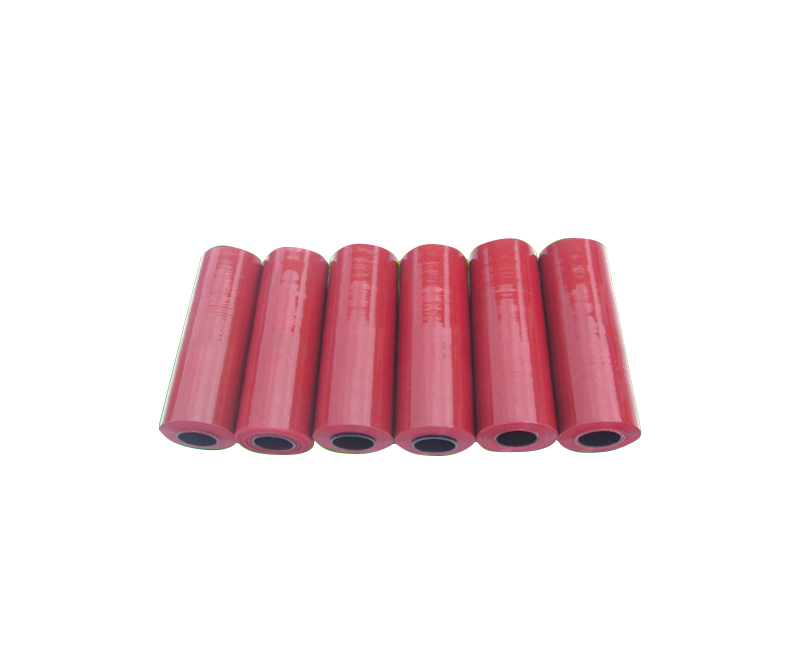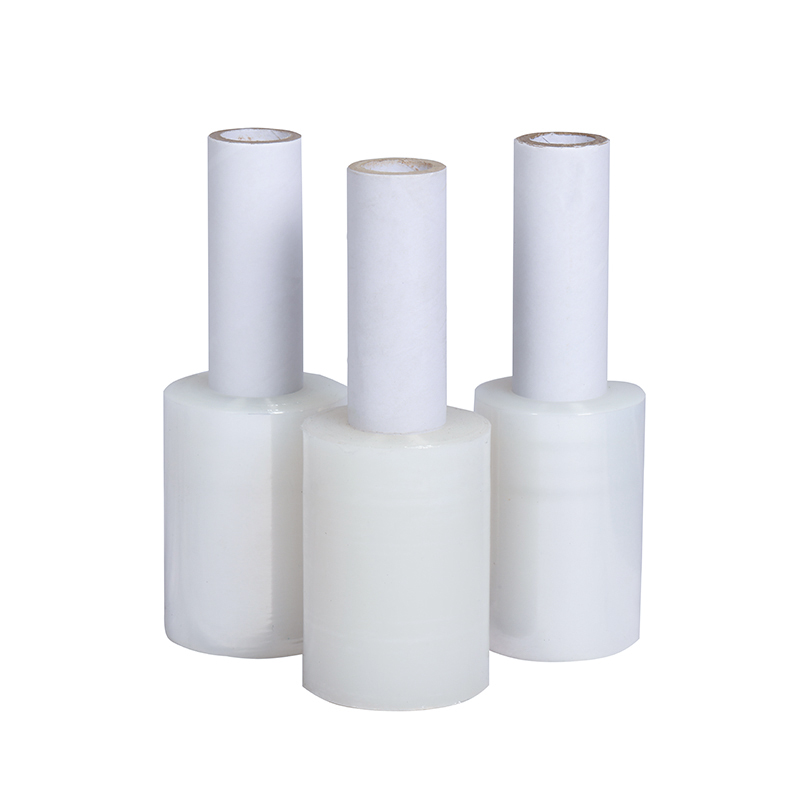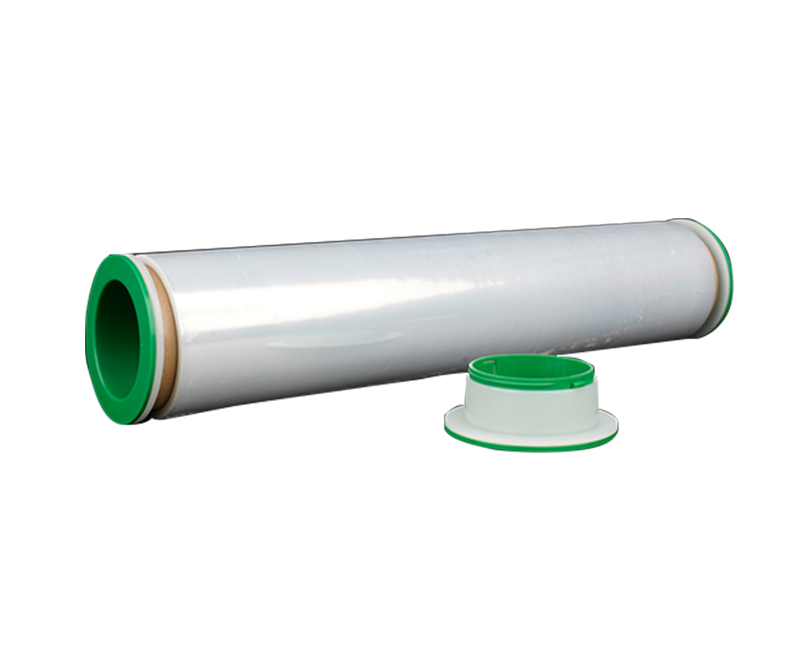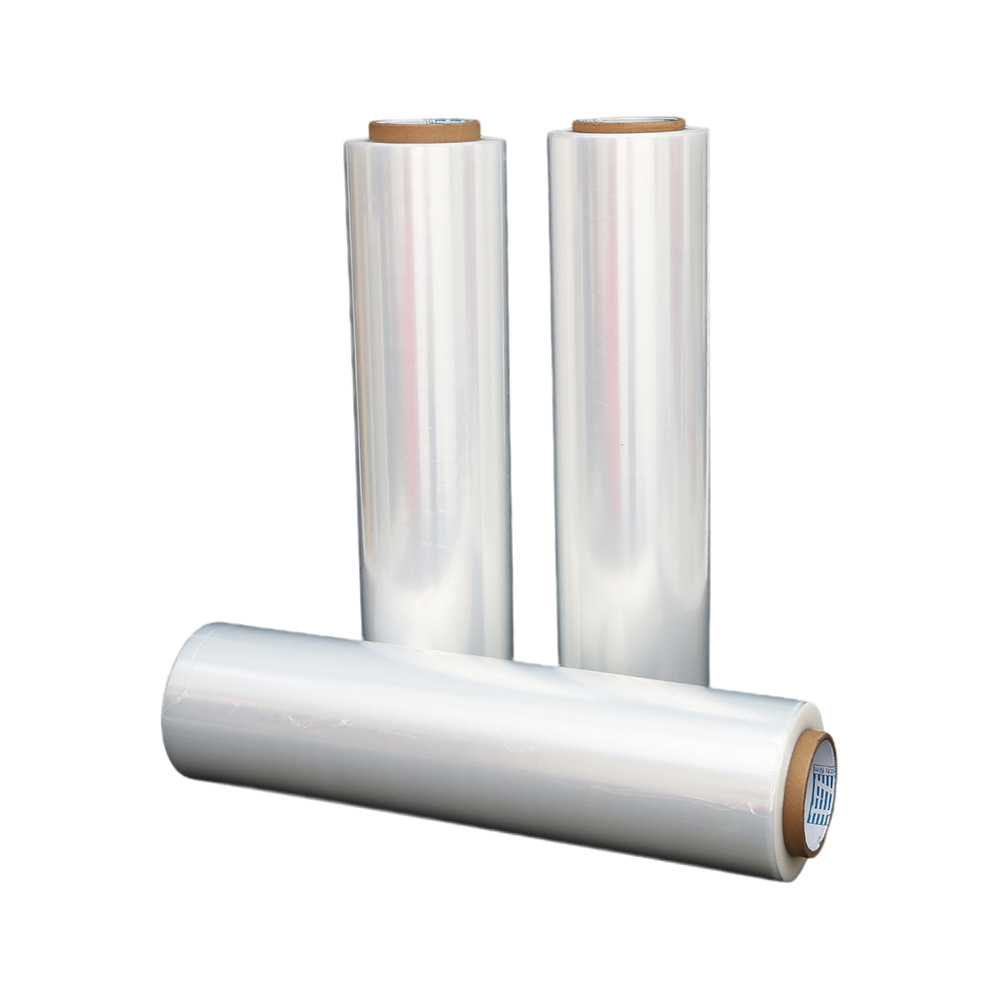5 Major Benefits of RoHS-Certified Electrical Wire Film
Source:5 Major Benefits of RoHS-Certified Electrical Wire FilmTime:2025-10-11Visitors:
Using RoHS-certified electrical wire film in electronics is essential because it guarantees compliance with strict hazardous substance regulations, significantly reduces environmental impact, enhances product safety, boosts brand reputation, and ensures broader market access. This certification confirms the film is free from harmful materials, protecting both consumers and the planet.
In the rapidly evolving world of electronics, where innovation meets increasing environmental consciousness, the materials we choose are more critical than ever. It's not just about functionality anymore; it's about responsibility. That's where RoHS-certified electrical wire film steps in, offering a crucial layer of protection that extends far beyond just the wires themselves.

Table of Contents
- What Exactly is RoHS Certification for Electrical Wire Film?
- Why Does RoHS-Certified Electrical Wire Film Matter for Electronics?
- How Does RoHS-Certified Film Ensure Environmental Responsibility?
- What Are the Key Safety Advantages of RoHS-Certified Film?
- How Does RoHS Certification Boost Market Access and Brand Reputation?
1. What Exactly is RoHS Certification for Electrical Wire Film?
What does it truly mean for electrical wire film to be RoHS-certified, and why is this distinction so important in the electronics industry? RoHS certification for electrical wire film signifies that the product strictly adheres to the European Union's Restriction of Hazardous Substances Directive, meaning it contains less than the specified maximum levels of ten prohibited hazardous materials, including lead, mercury, cadmium, and certain phthalates. This compliance ensures the film is safe for both manufacturing and end-use, minimizing environmental and health risks.
This isn't just a label; it's a commitment to a safer, more sustainable future for electronics.
1.1. Understanding the RoHS Directive and Its Scope
The RoHS Directive (Restriction of Hazardous Substances) originated in the European Union (EU) and has become a global benchmark for environmental compliance in electronics. Its primary goal is to restrict the use of specific hazardous materials found in electrical and electronic products. For electrical wire film, this means ensuring that the materials used in its production—from the PVC resin to any additives or colorants—do not exceed the permissible limits for substances like:
- Lead (Pb): Often found in solders and some plastics.
- Mercury (Hg): Used in switches and fluorescent lamps.
- Cadmium (Cd): Found in batteries and some pigments.
- Hexavalent Chromium (Cr(VI)): Used in metal finishes.
- Polybrominated Biphenyls (PBB) and Polybrominated Diphenyl Ethers (PBDE): Flame retardants.
- Four Phthalates (DEHP, BBP, DBP, DIBP): Plasticizers that can be harmful.
The scope of RoHS is broad, covering everything from large household appliances to medical devices, and crucially, the components and materials used within them, like electrical wire film.
1.2. The Certification Process for Electrical Wire Film
Achieving RoHS certification for electrical wire film isn't a simple self-declaration; it involves a rigorous process to verify compliance. Manufacturers, like Dongguan Zhicheng Plastic Products Co., Ltd., typically undertake several steps:
- Material Declaration: Gathering detailed information from all raw material suppliers to confirm the absence or low levels of restricted substances.
- Testing: Sending samples of the electrical wire film to accredited third-party laboratories for chemical analysis. These tests use advanced techniques like X-ray Fluorescence (XRF) or Gas Chromatography-Mass Spectrometry (GC-MS) to detect and quantify the restricted substances.
- Documentation: Compiling a comprehensive Technical File that includes test reports, material declarations, and a Declaration of Conformity (DoC).
- Auditing: Some certification bodies may conduct factory audits to ensure manufacturing processes prevent contamination with hazardous substances.
This thorough process ensures that when you see an electrical wire film labeled as RoHS-certified, it has genuinely met the strict requirements.
1.3. Global Impact and Similar Regulations
While RoHS originated in the EU, its influence has spread worldwide, inspiring similar regulations in other countries and regions. For instance:
- China RoHS: A similar directive in China, often with slightly different scopes or substance lists.
- California Proposition 65: In the US, this requires warnings for products containing chemicals known to cause cancer or reproductive harm.
- Korea RoHS (K-RoHS): South Korea's version of the directive.
This global alignment means that choosing RoHS-certified electrical wire film not only ensures compliance in the EU but also often facilitates compliance with analogous regulations internationally, simplifying market access for electronics manufacturers.
2. Why Does RoHS-Certified Electrical Wire Film Matter for Electronics?
Why is the choice of RoHS-certified electrical wire film not just a preference, but a fundamental necessity for modern electronics manufacturing? RoHS-certified electrical wire film matters for electronics because it directly addresses critical concerns regarding environmental protection, human health, and market viability. It ensures that the foundational components of electronic devices are free from hazardous substances, aligning with global sustainability goals and consumer safety expectations.
In an industry under constant scrutiny, this certification provides a crucial layer of trust and responsibility.
2.1. Mitigating Environmental Impact from Production to Disposal
The lifecycle of electronic products, from manufacturing to eventual disposal, can have significant environmental consequences. Using RoHS-certified electrical wire film plays a vital role in mitigating this impact by:
- Reducing hazardous waste: Preventing restricted substances from entering landfills or incinerators, where they could leach into soil and water or release toxic fumes.
- Supporting recycling efforts: Products made with fewer hazardous materials are generally easier and safer to recycle, promoting a circular economy.
- Lowering carbon footprint: Often, the processes to create RoHS-compliant materials are also more environmentally friendly.
By choosing RoHS-certified film, electronics manufacturers contribute to a cleaner planet, reducing the long-term ecological burden of their products.
2.2. Protecting Human Health Throughout the Product Lifecycle
The hazardous substances restricted by RoHS aren't just bad for the environment; they pose serious risks to human health. Using RoHS-certified electrical wire film protects individuals at every stage:
- Manufacturing workers: Less exposure to toxic chemicals during production.
- Consumers: Reduced risk of exposure to harmful substances during product use, especially if components degrade or are handled frequently.
- Recycling workers: Safer handling of end-of-life products, as they contain fewer dangerous materials.
This commitment to health protection is a cornerstone of responsible manufacturing, ensuring that the convenience of electronics doesn't come at a human cost.
2.3. Ensuring Broader Market Access and Global Compliance
In today's interconnected global economy, market access is everything. Many major markets, particularly the EU, mandate RoHS compliance for electronic products. By using RoHS-certified electrical wire film, manufacturers automatically gain a significant advantage:
- Unrestricted entry into key markets: Avoiding costly delays, rejections, or fines associated with non-compliance.
- Simplified export processes: Streamlining documentation and customs clearance.
- Meeting customer expectations: Many large corporate buyers and consumers now demand RoHS-compliant products.
This proactive approach to compliance ensures that electronic products can reach a wider audience without unnecessary hurdles, maximizing sales potential and global reach.
2.4. Enhancing Product Quality and Longevity
While the primary focus of RoHS is on hazardous substances, the rigorous testing and material selection involved in achieving certification often lead to an indirect benefit: enhanced product quality and longevity. Manufacturers committed to RoHS compliance typically use higher-grade, more stable materials. This can result in electrical wire film that is:
- More durable: Less prone to degradation over time.
- More reliable: Consistent performance in various conditions.
- Less likely to leach: Maintaining its integrity and protective qualities for longer.
Ultimately, choosing RoHS-certified film isn't just about avoiding bad stuff; it's often about choosing better, more robust materials that contribute to a higher-quality, longer-lasting electronic product.
3. How Does RoHS-Certified Film Ensure Environmental Responsibility?
How does opting for RoHS-certified electrical wire film specifically contribute to a company's environmental responsibility and sustainability goals? RoHS-certified electrical wire film ensures environmental responsibility by eliminating or significantly reducing the presence of hazardous heavy metals and flame retardants that are detrimental to ecosystems. This commitment minimizes pollution during manufacturing, reduces toxic waste in landfills, and supports safer recycling practices, aligning directly with global sustainability initiatives.
It's a tangible step towards a greener supply chain and a healthier planet.
3.1. Elimination of Harmful Heavy Metals
One of the core tenets of RoHS certification is the restriction of heavy metals like lead, mercury, and cadmium. These elements are notoriously toxic and persistent in the environment. By using RoHS-certified electrical wire film, companies actively:
- Prevent soil and water contamination: Heavy metals can leach from landfills into groundwater, impacting ecosystems and human health.
- Reduce air pollution: Incineration of non-compliant materials can release toxic fumes containing these metals.
- Protect biodiversity: Minimizing the presence of these substances helps safeguard plant and animal life.
This direct elimination of harmful heavy metals is a powerful statement of environmental stewardship, ensuring that the film's entire lifecycle is less damaging.
3.2. Reduction of Toxic Flame Retardants (PBBs, PBDEs)
Historically, certain flame retardants like Polybrominated Biphenyls (PBBs) and Polybrominated Diphenyl Ethers (PBDEs) were used in plastics, including some wire films, to prevent fires. However, these chemicals are persistent organic pollutants (POPs) that accumulate in the environment and living organisms, posing serious health risks. RoHS-certified electrical wire film ensures these are either absent or present in negligible amounts, leading to:
- Decreased bioaccumulation: Less of these chemicals entering the food chain.
- Improved air quality: Fewer toxic emissions during manufacturing and disposal.
- Safer product composition: Protecting both workers and end-users from exposure.
By choosing films free from these specific flame retardants, companies are actively reducing the spread of long-lasting environmental contaminants.
3.3. Facilitating Safer Recycling and Waste Management
The end-of-life stage for electronics is a critical point for environmental impact. Products containing hazardous substances complicate recycling efforts, often requiring specialized and costly processes, or leading to unsafe disposal. RoHS-certified electrical wire film simplifies this by:
- Enabling easier material separation: Recyclers can process materials with greater confidence.
- Reducing risks for recycling workers: Less exposure to dangerous chemicals during dismantling.
- Increasing the value of recycled materials: Contaminant-free plastics are more desirable for reuse.
This commitment to safer materials directly supports the circular economy, making it more feasible and environmentally sound to recover and reuse valuable resources from electronic waste.
Here's a quick look at the impact of restricted substances:
4. What Are the Key Safety Advantages of RoHS-Certified Film?
Beyond environmental benefits, what are the direct safety advantages that RoHS-certified electrical wire film brings to electronics and their users? RoHS-certified electrical wire film offers key safety advantages by eliminating substances that can be toxic upon contact or inhalation, reducing the risk of fire hazards through safer flame retardants, and ensuring long-term material stability that prevents degradation into harmful byproducts. This directly protects manufacturing personnel, consumers, and the overall integrity of electronic devices.
It's about building trust and ensuring that the technology we rely on is safe from the inside out.
4.1. Protection Against Toxic Exposure for Workers and Consumers
The hazardous substances restricted by RoHS are dangerous. For instance, lead is a neurotoxin, and cadmium is a known carcinogen. By using RoHS-certified electrical wire film, manufacturers significantly reduce the risk of toxic exposure:
- During manufacturing: Workers handling raw materials or processing the film are less exposed to harmful chemicals.
- During product use: Consumers are protected from potential exposure if the film degrades over time or is handled frequently, especially in products like wearable electronics or children's toys.
- During repair/recycling: Technicians and recyclers face fewer health risks when handling end-of-life products.
This proactive elimination of toxins ensures a safer environment for everyone involved with the product, from its creation to its disposal.
4.2. Reduced Fire Hazards and Improved Flame Retardancy
While some flame retardants are restricted by RoHS, the directive doesn't eliminate the need for fire safety. Instead, it encourages the use of safer, non-toxic alternatives. RoHS-certified electrical wire film often incorporates flame retardants that are compliant with the directive while still providing essential fire protection. This means:
- Lower risk of ignition: The film itself is less likely to catch fire.
- Reduced spread of flames: If a fire does occur, the film helps to contain it.
- Fewer toxic fumes: In the event of a fire, the burning of RoHS-compliant materials produces fewer harmful gases compared to those containing restricted flame retardants.
This dual benefit of fire safety and reduced toxicity is crucial for electronic devices, where overheating can be a concern.
4.3. Enhanced Material Stability and Longevity
The substances restricted by RoHS, particularly certain plasticizers (phthalates) and heavy metals, can sometimes contribute to material degradation over time. When these materials break down, they can become brittle, lose their protective qualities, or even leach harmful chemicals. RoHS-certified electrical wire film, by avoiding these problematic substances, often exhibits:
- Greater long-term stability: The film maintains its physical and electrical properties for longer.
- Reduced risk of embrittlement: Less likely to crack or break, ensuring continuous protection.
- Prevention of harmful leaching: The absence of restricted substances means no toxic chemicals will migrate out of the film.
This enhanced stability contributes to the overall reliability and safety of the electronic device, ensuring the film continues to perform its protective function throughout the product's lifespan.
4.4. Compliance with International Safety Standards
Beyond RoHS itself, many international safety standards for electronic products (e.g., IEC, UL) implicitly or explicitly align with the principles of hazardous substance restriction. Using RoHS-certified electrical wire film helps manufacturers meet these broader safety requirements, demonstrating a commitment to:
- Product integrity: Ensuring components are safe and reliable.
- Consumer confidence: Building trust through adherence to recognized safety benchmarks.
- Regulatory approval: Facilitating faster and smoother certification processes for the final electronic product.
This holistic approach to safety, starting with compliant materials, is fundamental for any electronics company aiming for global market leadership and unwavering consumer trust.
5. How Does RoHS Certification Boost Market Access and Brand Reputation?
How does the strategic choice of RoHS-certified electrical wire film directly translate into expanded market opportunities and a stronger, more reputable brand image for electronics manufacturers? RoHS certification significantly boosts market access by ensuring compliance with mandatory regulations in major global markets, thereby avoiding trade barriers and facilitating smoother exports. Simultaneously, it elevates brand reputation by demonstrating a strong commitment to environmental responsibility and product safety, resonating with eco-conscious consumers and corporate buyers.
It's a powerful differentiator in a competitive landscape, signaling quality and ethical manufacturing.
5.1. Unlocking Access to Key Global Markets
As mentioned earlier, RoHS compliance is not optional for selling electronic products in the European Union, and similar regulations exist in many other countries. By using RoHS-certified electrical wire film, electronics manufacturers immediately unlock access to these crucial markets. This means:
- No trade barriers: Products won't be blocked at customs due to non-compliance.
- Competitive advantage: Outperforming competitors who may not have adopted RoHS-compliant materials.
- Simplified regulatory navigation: Reducing the complexity and cost of managing multiple regional compliance requirements.
This direct market access is a fundamental benefit, allowing companies to reach a broader customer base without significant regulatory hurdles.
5.2. Enhancing Brand Image and Consumer Trust
In an era where consumers are increasingly environmentally and socially conscious, a company's commitment to sustainability directly impacts its brand image. Using RoHS-certified electrical wire film allows electronics manufacturers to:
- Demonstrate environmental stewardship: Positioning the brand as responsible and forward-thinking.
- Build consumer trust: Assuring customers that products are safe and ethically produced.
- Attract eco-conscious buyers: Tapping into a growing market segment that prioritizes sustainable choices.
This positive brand association can lead to increased customer loyalty, positive word-of-mouth, and a stronger market presence.
5.3. Meeting Corporate Social Responsibility (CSR) Goals
Many large corporations and public sector organizations have stringent Corporate Social Responsibility (CSR) policies that mandate the use of environmentally friendly and safe components in their supply chains. By incorporating RoHS-certified electrical wire film, manufacturers can:
- Qualify for preferred supplier status: Meeting the ethical sourcing requirements of major corporate clients.
- Improve sustainability reporting: Providing tangible evidence of environmental commitment for annual reports and stakeholder communications.
- Attract ethical investors: Appealing to investors who prioritize ESG (Environmental, Social, and Governance) factors.
This alignment with CSR goals is crucial for securing lucrative contracts and demonstrating leadership in sustainable business practices.
5.4. Future-Proofing Products Against Evolving Regulations
The trend towards stricter environmental and safety regulations for electronics is only accelerating. By proactively adopting RoHS-certified electrical wire film now, manufacturers are essentially future-proofing their products. This means:
- Reduced risk of obsolescence: Products are less likely to become non-compliant with future regulatory updates.
- Lower adaptation costs: Avoiding expensive redesigns or material changes down the line.
- Maintaining market relevance: Staying ahead of the curve in a rapidly changing regulatory landscape.
This forward-thinking approach ensures long-term viability and sustained competitiveness in the dynamic electronics industry.
Here's a summary of how RoHS certification impacts market and brand:
Conclusion
The decision to use RoHS-certified electrical wire film in electronics is far more than a mere compliance checkbox; it's a strategic imperative for any forward-thinking manufacturer. This specialized film provides a foundational layer of protection that extends from environmental stewardship and human health safety to critical market access and brand reputation. By eliminating hazardous substances, facilitating safer recycling, and ensuring long-term product integrity, RoHS-certified film not only meets stringent global regulations but also resonates deeply with the values of today's consumers and corporate partners. Embracing this standard is a clear commitment to quality, responsibility, and sustained success in the competitive and evolving electronics industry.
Recommended Products
Ranked in the same article
- how to use the stretch film technology to r
- How can we get detailed price list?
- Five common quality problems of PE protecti
- Plastic film degradation
- How to guarantee punctual shipment for our
- Gauge to Micron and Millimetre Conversion G
- What is the difference between stretch film
- Testing the permeability of stretch film
- Stretch film temperature requirements
- Electrical wire film VS electrostatic film
- Why insufficient transparency of stretch w
Latest news articles
- Bundling Stretch Film: Optimize Your Packag
- What Properties Ensure Effective Cold Chain
- What is the Difference Between Magic Tape a
- How to check the quality of PE stretch film
- Stretch Film Wrap: Unraveling Its Benefits
- How can PE stretch film be cut better?
- Advantages of white engineering film
- The 133rd Spring Canton Fair
- The significance of using PE electric wire
- Factors affecting viscosity of PE stretch f
- The Ultimate Guide to Choosing the Right Ma



